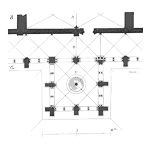
Last year, the Government Accountability Office (GAO) reported that the Chemical Safety Board (CSB) is not meeting its statutory mandate by investigating major chemical accidents.
[Read more…]Your Reliability Engineering Professional Development Site
Find all articles across all article series listed in reverse chronological order.
by Sanjeev Saraf Leave a Comment

Last year, the Government Accountability Office (GAO) reported that the Chemical Safety Board (CSB) is not meeting its statutory mandate by investigating major chemical accidents.
[Read more…]by Mike Sondalini Leave a Comment

Technological inheritance, defect inheritance, and quality inheritance transfer to the future. To create a better future for your organization you first must create a better past so it can later inherit the preordained successes you designed and imbedded into your company.
[Read more…]by Greg Hutchins Leave a Comment

“That’s a Red Flag!” goes the cry from some when something amiss is recognised. However, many project participants don’t realise that their Project sails through a sea of flags and that, on some occasion, the flags can be read as red by somebody at some time.
In a similar nautical vein the Roman writer Ovid once poetized “The man who has experienced shipwreck shudders even at a calm sea“. While written some 2,000 years ago it is as true today as it ever was and a reminder to us all that risks lurk everywhere. Some risks may not be identified, let alone assessed and may go unnoticed until they strike. We need to be aware and vigilant and avoid a complacent belief that a risk register is the be all and end all.
[Read more…]by Larry George Leave a Comment

How is failure testing done on the Space Station? Could FTA (Fault Tree Analysis) be used in reverse to detect multiple failures given symptoms? That’s what NASA was programming in the 1990s. I proposed that the ratios P[part failure]/(part test time) be used to optimally sequence tests. Those ratios work if there are multiple failures, as long as failure rates are constant and failure times are statistically independent.
[Read more…]by Nancy Regan Leave a Comment

What does asset management have to do with TIME? Everything.
My mentor, John Moubray, taught me that our most valuable resource is TIME. Time is WAY more valuable than money.
How you spend your TIME determines IF and HOW your asset management efforts will pay off. In other words, will your efforts help you achieve the kind of equipment Reliability you’re looking for?
[Read more…]by Sanjeev Saraf Leave a Comment

On July 27, 2009 OSHA launched its National Emphasis Program (NEP) targeted at chemical facilities. The NEP will operate as a one-year pilot program during which OSHA will conduct planned inspections of chemical facilities.
[Read more…]by Robert (Bob) J. Latino Leave a Comment

There are many opinions about the use of the breakdown flag in SAP-PM. I would like to offer my opinion on this debate. First, I do not like the term “breakdown”. With a name like breakdown, nobody will want to check the box! No one likes to admit that a something has failed or is broken. I wish the field were named “reliability event” to take away this negative connotation. I will discuss this in more detail later.
[Read more…]by Mike Sondalini Leave a Comment

Using Reliability Principles for a Cheap Way To High Pumping Circuit Availability. High plant availability is achieved by having redundant equipment that can be brought on-line as soon as the operating unit has failed. Redundancy is expensive as there are two items to buy, two to install and two to maintain at full operating capacity. There is an alternate option for maintaining high pumping circuit availability by designing quick methods to bring mobile equipment into the circuit when pumps are down. This article explains how to set-up piping for a mobile pump to maintain operation when the normal duty pump is out of use.
[Read more…]by Greg Hutchins Leave a Comment

Email is 50 this year…its Golden Anniversary! It ‘happened’ in 1971 when Ray Tomlinson, the late computer engineer and first user, sent a transmission to himself utilising two independent computers…a revolutionary innovation at the time. The content of that primordial message is long forgotten and the same may also be the fate of many of the ~300 billion emails that are sent almost every day by the estimated 4 billion users around the world. Communication is said to bring us together or set us apart and email is no different.
[Read more…]by Ray Harkins Leave a Comment

Abraham Lincoln taught the value of adequate preparation when he said, “Give me six hours to chop down a tree and I will spend the first four sharpening the axe.” By training, quality professionals are often focused on verifying the correctness of a product. A traditional inspector at the Lincoln Timber Company might have dutifully marked in her audit log the date and time, the type and size of tree, followed by the comment, “Cut down.”
But Honest Abe would have advised her to take a closer look at the tools and process used to complete the job.
[Read more…]by Sanjeev Saraf Leave a Comment

Years after 9/11 threat of terrorism continues to persist. Organizations buying insurance to provide protection from terror attacks is on the rise.
Prior to 9/11, there was terrorism insurance was not a major concern. However, after 9/11 insurance and reinsurance companies found themselves with significant amount of exposure. Immediately following 9/11, insurance companies were refusing to provide terrorism insurance or providing it at a very high premium to high risk facilities.
[Read more…]by John Kreucher Leave a Comment

The Arrhenius Equation is widely used and accepted by reliability and validation engineers from many industries to develop accelerated life tests (ALT) for thermal aging environments.
The general form of the equation describes the reaction rate of a process as a function of temperature (K), the Boltzmann constant (8.617E-5 eV/K) and two empirical factors. It can be written as:
[Read more…]by Greg Hutchins Leave a Comment

The Ever Given grounding in the Suez Canal is one of those events that will be labeled a “Black Swan” for sure. A rouge wind hits the ship turning the stern and wedging the vessel, bow and stern grounded straddling the canal and stranding ships entering from either end. The date Tuesday 23 March 2021. At around 7.40 a.m. local time the Ever Given ran aground. At nearly 200 feet wide and 1,300 feet long, it easily took up the width of the channel.
by Mike Sondalini Leave a Comment

These are the slides from Mike’s conference presentation at the SIRFRt CM & Lube Forum 2008 Conference.
[Read more…]by George Williams Leave a Comment

Maintenance, failures, design for reliability, use of RCM and predictive technologies explained in infographic. Leave some feedback so we can make it better.
[Read more…]